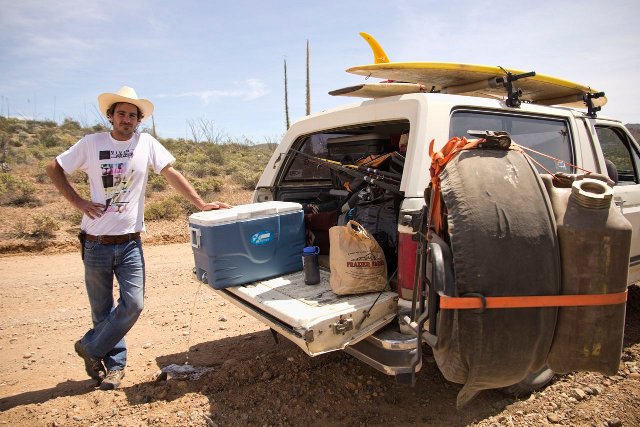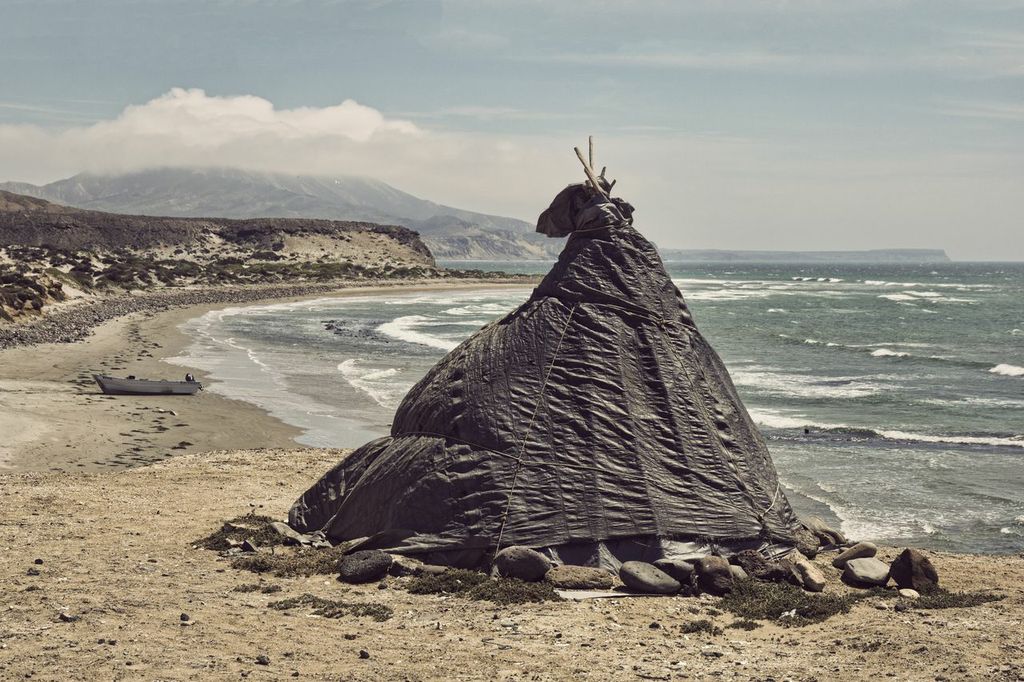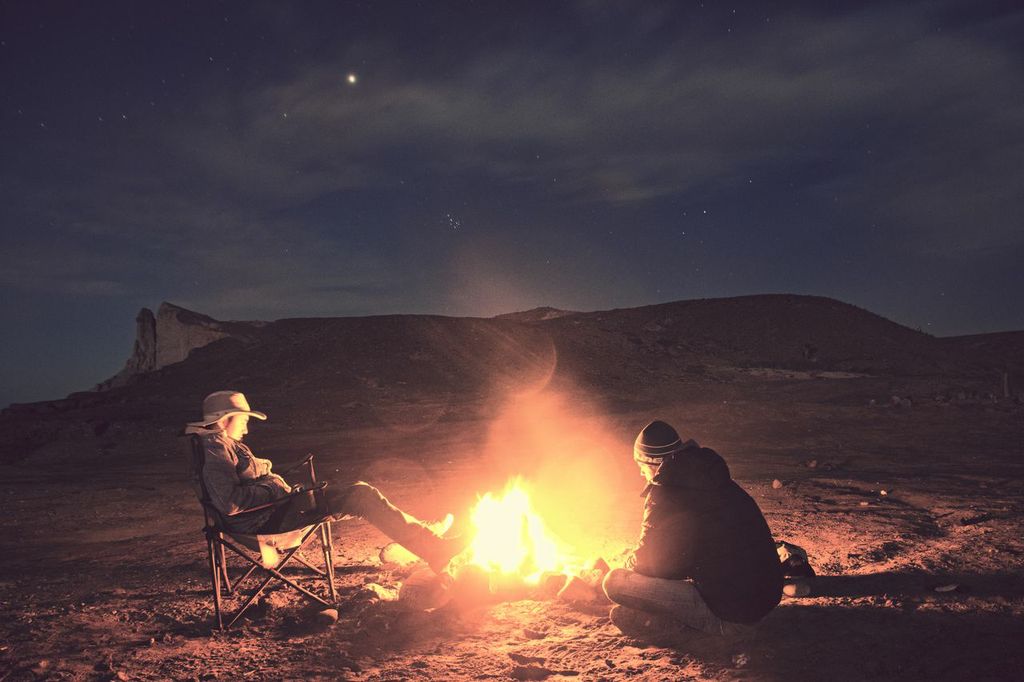Panga Chaser Releases YouTube Documentary
Jesse Aizenstat Spends Week in Baja California Looking for Answers to Maritime Drug-Smuggling Issue

Earlier this year, Jesse Aizenstat’s curiosity was piqued by the sudden influx of panga boats smuggling loads of marijuana up from Baja California onto Golden State shores. A self-styled rogue journalist with a knack for packaging his reporting into slick and accessible bundles of adventure and information, the 28-year-old Santa Barbaran headed to Mexico with a translator and videographer to see for himself what was happening in the mostly lawless Baja deserts and ports populated by the Sinaloa Cartel. The result of the week-long journey is a four-part YouTube documentary that throws the viewer into the trio’s car as they survey and survive the terrain, meeting with border security experts, fugitive panga captains, and everyone in between.
Aizenstat and I sat down Friday to talk about his latest release — his book, Surfing the Middle East, was the subject of an Independent cover story in March 2011 — and why a free, entertainment-driven documentary in the travel news genre might be the best way to examine tangled, wonky issues like the border industrial complex, socio-economic disparities, drug policy and law, and so on. Part 1 of Baja Smugglers was released Thursday and can be found below. Stay tuned for Parts 2, 3, and 4 to be posted exclusively on independent.com throughout the week.
So why the panga issue? What got you so interested in it? I was driving my car and listening to an NPR story on pangas, and I just immediately knew I could do something with it. I feel like I’m working to develop a formula I spelled out in Surfing the Middle East, which is take an amusing and entertaining story and make an adventure out of it, and take the adventure and relate it back to a news story. I figured that method could communicate the news to the twenty- and thirty-somethings in a way they’ll find interesting.
Did you know you wanted to do video right away, or did you think this might turn into another book? Video is so hot. What I learned from Surfing the Middle East is that reading about a topic is great, but everyone wants to see it and hear it now. There’s an ability with video to story-tell and show things instead of say things.
What was the first step to get the project going? I hooked up with DNA Imagery and its owner, Derren Ohanian, who was our videographer. It’s a local thing, and we really believe that we can make stuff people want to watch.
How did you map your route? Before we left I wrote a treatment about how I imagined it to go [chuckles], and then it went the way it went. We had a few set interviews, but the real wild part was going down to the lawless desert, because we knew that’s where all the marijuana is grown. We were told, “The guys there will probably just be happy to see you. They don’t care; they’re in the middle of the desert.”

How did you deal with the camera? From watching the footage it looks like it was out in the open at times, then hidden at others. We had a game plan that we were going to feel it out. We always asked if we could be there taking pictures and video. We tried to befriend people with common interests. Then they would start to talk with us and open up.
Did you identify yourselves as journalists, filmmakers, tourists … ? Did people ask? Everyone was different. During the part with the guys and their tractor in the desert, we told them we were making movie. I don’t know what they thought. One guy didn’t want to be on camera, and we respected that. But really, I don’t think the smugglers come across as the villains in this piece. The villain in this piece is the American willingness to solve our social and political problems with more and more defense spending when we have other pressing problems.
Talk to me about the scene where a smuggler tells about a girl he knew who turned into an informant and was subsequently murdered. That was heavy. I suppose the inequality of the world bit us. Some people live very different lives than how we live. In the narrative arc, that was our transformation moment. It was a hot-on-the-trail-type story to hear the reality behind the panga business, then this guy just laid it out without emotion: “Yeah, they killed the girl.” We’re sitting in this panga hanger, and we have no idea what he’s going to do if he realizes the camera man left his camera on. We didn’t know he was filming until we got back to the car and he said, “Dude, I got all that on tape with audio.” There was a temptation to just delete it then and there so we would never have to deal with it.

It seems like you guys were working at a pretty furious pace down there. There was never a moment of rest, and there was a feeling in the car that we were hot on the trail to understand every link in the chain. When we met Luis [a Tijuana-based journalist], he said we should get on a panga. Then we were told we should go to the desert, where we met the guy on the tractor. He directed us to the fishing camp. So it’s like we were heading up the river, and when we got to the panga hanger we were eye-to-eye with Colonel Kurtz. It was radical. It changed us all, certainly.
Did you arm yourselves? I suppose if we were armed with anything we were armed behind this young, surfer, tourist persona. If you come across as a suit-and-tie journalist, it just doesn’t work. The secret is showing you’re harmless then bonding with people. We met some really cool people.
What was a surprise takeaway for you? Just how business-orientated [the smugglers] are. They’re really just businessmen who are making money off the craziness that’s going on in their own country and our drug laws that don’t really make sense. So who’s coming out ahead in all this? The drug cartels, the Sinaloa Cartel. And then there’s this disproportionate response from us. Panga money is loose change compared to chasing pangas with drones. It’s a dichotomy of guerrilla vs. conventional. Pangas are disposable and the marijuana is so cheap to grow, so if one in 10 gets through, they’re doing great.
Do you have any other projects in the works? I think right now it comes down to proving relevance. Big executives have said there is a demand for travel news content, and I think VICE proved that by selling their HBO series that’s doing really well. And I think with online distribution, more and more people are seeing travel news as something to invest in. Anthony Bourdain uses food as the communicator; we’re using news as a communicator with interesting issues like pangas and the Middle East, and we’re hoping to reach hundreds of thousands of people.


